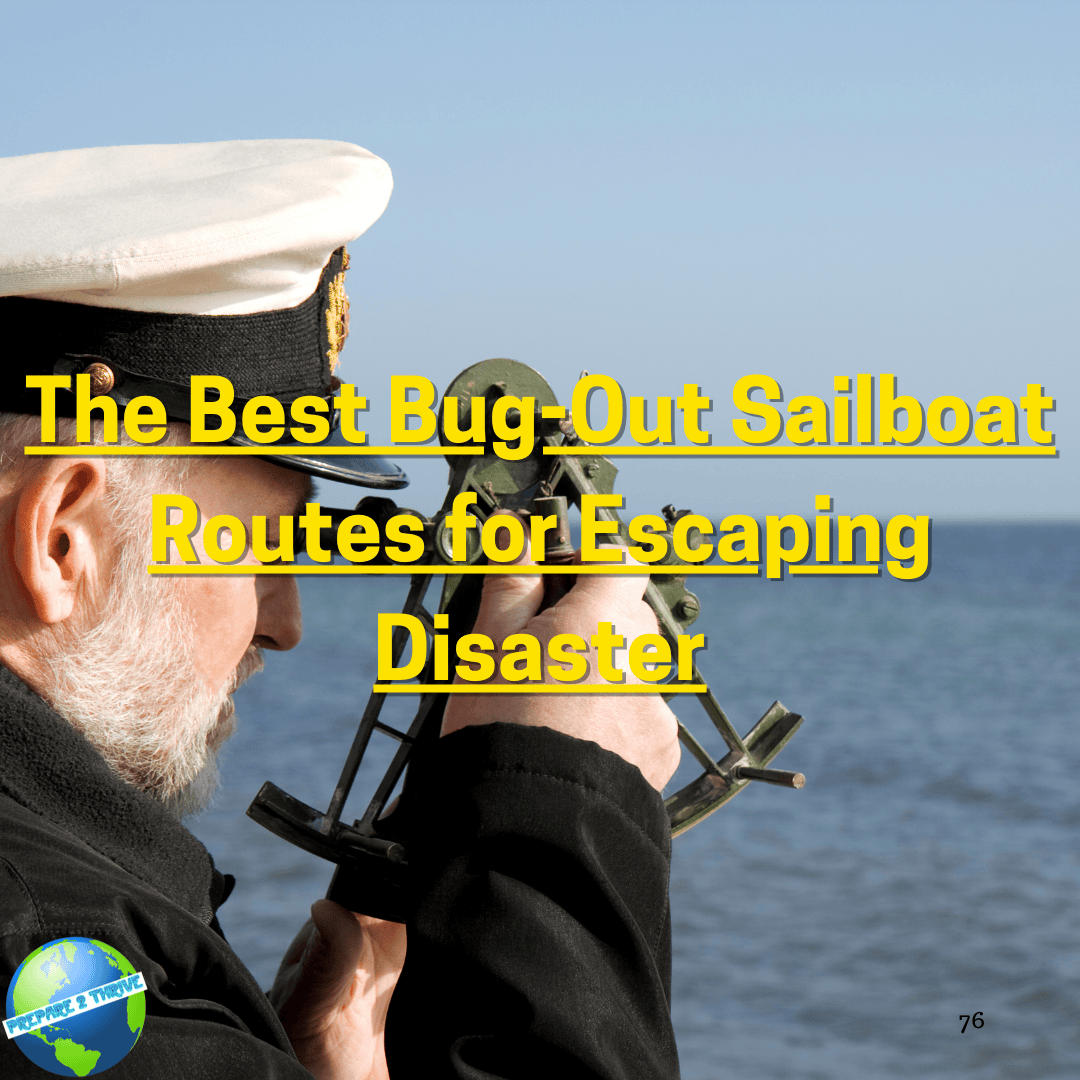When it comes to escaping a disaster, having a plan is crucial. While some people may opt for land-based evacuation routes, others prefer to take to the sea. A bug-out sailboat can provide a versatile and reliable means of escaping disaster zones. In this article, we will explore the best bug-out sailboat routes for escaping disaster scenarios.
Understanding Disaster Scenarios and Risks
Before we can choose the best bug-out sailboat routes, we must first understand the types of disasters that may require such action. Natural disasters such as hurricanes, earthquakes, tsunamis, and floods can quickly turn a once-safe area into a danger zone. Man-made disasters such as wars, political unrest, pandemics, and terrorist attacks can also pose significant risks to personal safety.
It is essential to identify and evaluate potential risks and their likelihood of occurrence. Understanding the severity of potential disasters can help us plan and prepare accordingly. For example, areas prone to hurricanes may require a more robust sailboat and a route that avoids potential storm paths.
Choosing the Right Bug-Out Sailboat Route
 When choosing the right bug-out sailboat route, several factors must be considered. Distance, time, hazards, resources, and other variables can all impact the success of the escape plan.
When choosing the right bug-out sailboat route, several factors must be considered. Distance, time, hazards, resources, and other variables can all impact the success of the escape plan.
Researching and comparing potential routes is critical. Nautical charts and weather forecasts can provide valuable information on water depths, currents, winds, and other navigational factors. It is also important to keep in mind that conditions can change rapidly, so plans must be adjusted accordingly.
The Best Bug-Out Sailboat Routes for Escaping Disaster
There are several types of bug-out sailboat routes to consider, each with its benefits and challenges.
Coastal routes involve following the coastline and stopping at safe harbours and anchorages along the way. This option provides easy access to resources such as food, water, and fuel. However, it may require navigating shallow waters and avoiding potential hazards such as rocks or other vessels.
Island-hopping routes involve using islands as way points and sources of resources. This option provides a more direct route, and islands can offer shelter and resources such as fresh water and food. However, it may also require navigating in open water, which can be challenging in adverse weather conditions.
Open ocean routes involve crossing large bodies of water to reach safe havens or remote destinations. This option can provide a quicker escape route and can avoid potential hazards such as coastal areas prone to natural disasters. However, it requires navigating in open water, which can be dangerous in adverse weather conditions.
Combination routes involve using a combination of coastal, island-hopping, and open ocean routes to reach a safe destination. This option provides flexibility and allows for adapting to changing conditions. However, it requires more planning and preparation to ensure a successful escape.
Preparing for Bug-Out Sailboat Routes
Preparing for bug-out sailboat routes involves packing essential items, maintaining the sailboat, and developing a contingency plan.
Packing essential items such as food, water, fuel, medical supplies, and communication devices is critical. It is also essential to ensure the sailboat is in good condition and fully equipped with safety equipment such as life jackets, flares, and a first aid kit. Developing a contingency plan that outlines emergency procedures and response measures can also help ensure a successful escape.
Conclusion
In conclusion, bug-out sailboats can provide a versatile and reliable means of escaping disaster zones. Choosing the right route involves considering factors such as distance, time, hazards, resources, and other variables. Coastal routes, island-hopping routes, open ocean routes, and combination routes are all viable options depending on the scenario.
Preparing for bug-out sailboat routes involves packing essential items, maintaining the sailboat, and developing a contingency plan to prepare for emergencies and unexpected situations. While bug-out sailboat routes may not be suitable for everyone, they can provide a viable option for those who are prepared and willing to take on the challenges of sea travel.
In summary, the best bug-out sailboat routes for escaping disaster will depend on the specific scenario and the resources available. It is essential to understand the risks and evaluate potential disaster scenarios to plan and prepare accordingly. Choosing the right route involves considering distance, time, hazards, resources, and other variables. Preparing for bug-out sailboat routes involves packing essential items, maintaining the sailboat, and developing a contingency plan to ensure a safe and successful escape.
The importance of preparedness and flexibility in disaster situations cannot be overstated. Having a well-thought-out plan and the ability to adapt to changing conditions can mean the difference between life and death. We encourage anyone considering a bug-out sailboat route to consult with experienced sailors, nautical charts, and weather forecasts to ensure a safe and successful journey. With the right preparation and planning, a bug-out sailboat route can provide a reliable means of escaping disaster and reaching safety.
Hashtags: #bugoutsailboat #disasterpreparation #sailing #seatravel #coastalroute #islandhopping #openoceanroute #contingencyplan #safety #preparedness.
